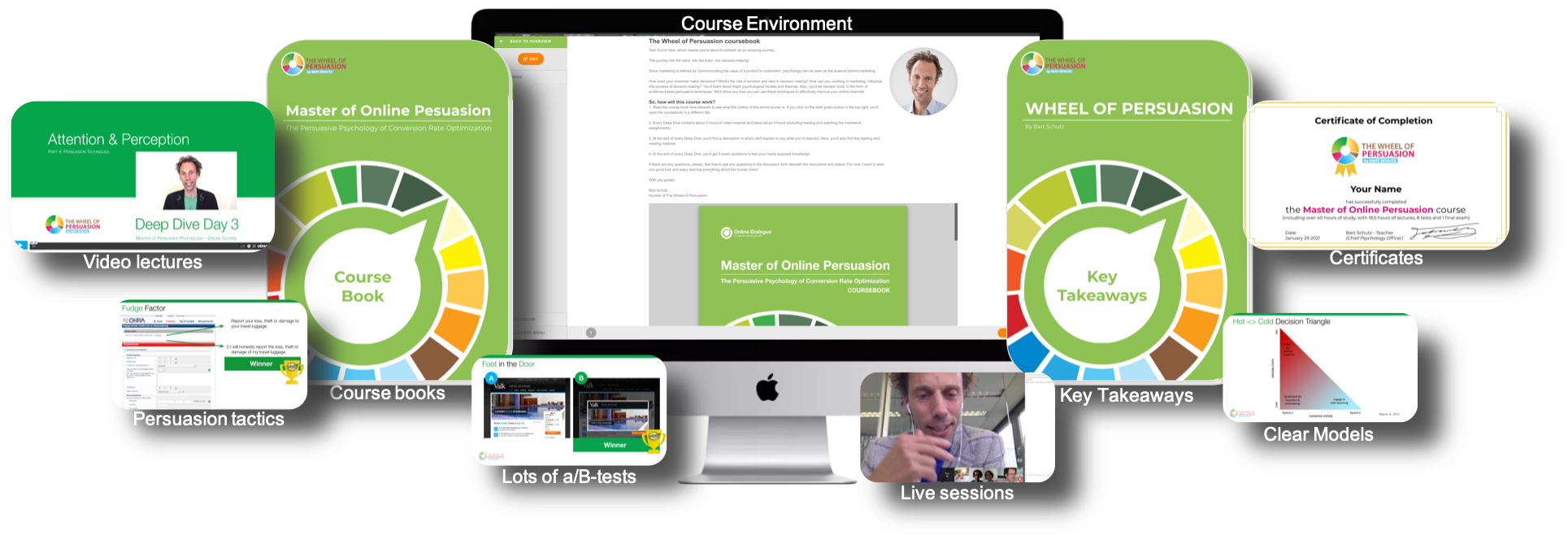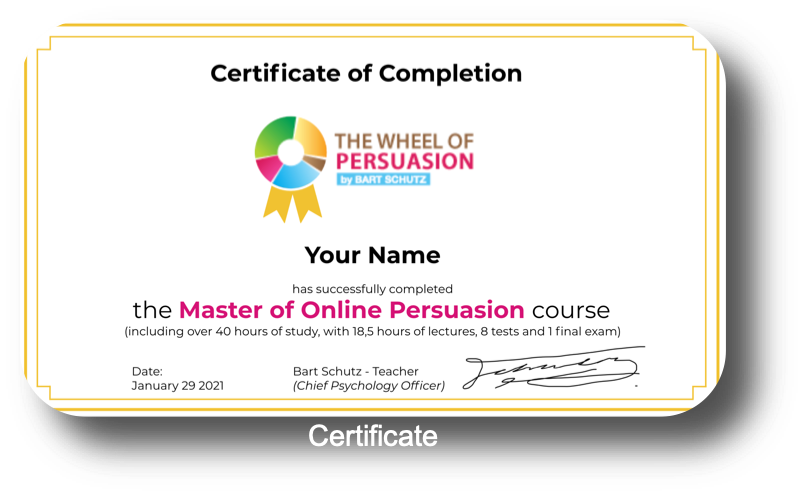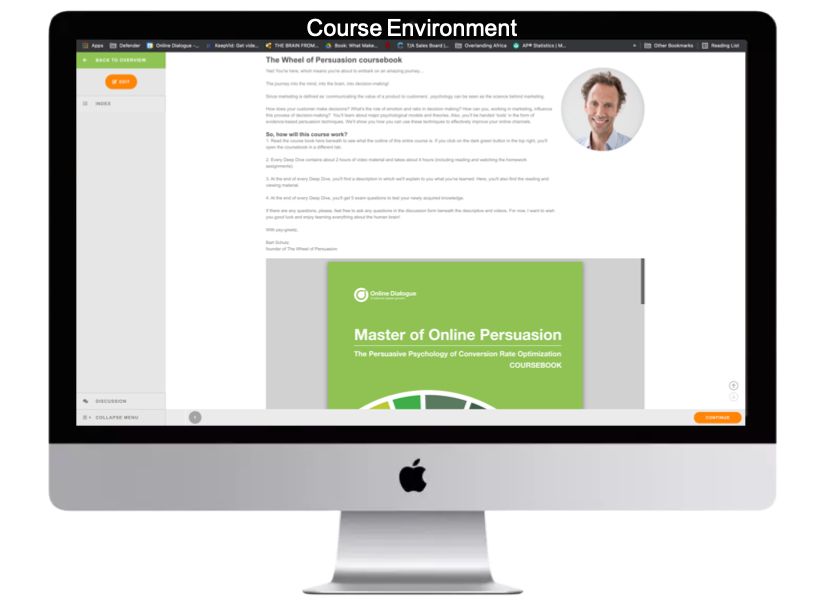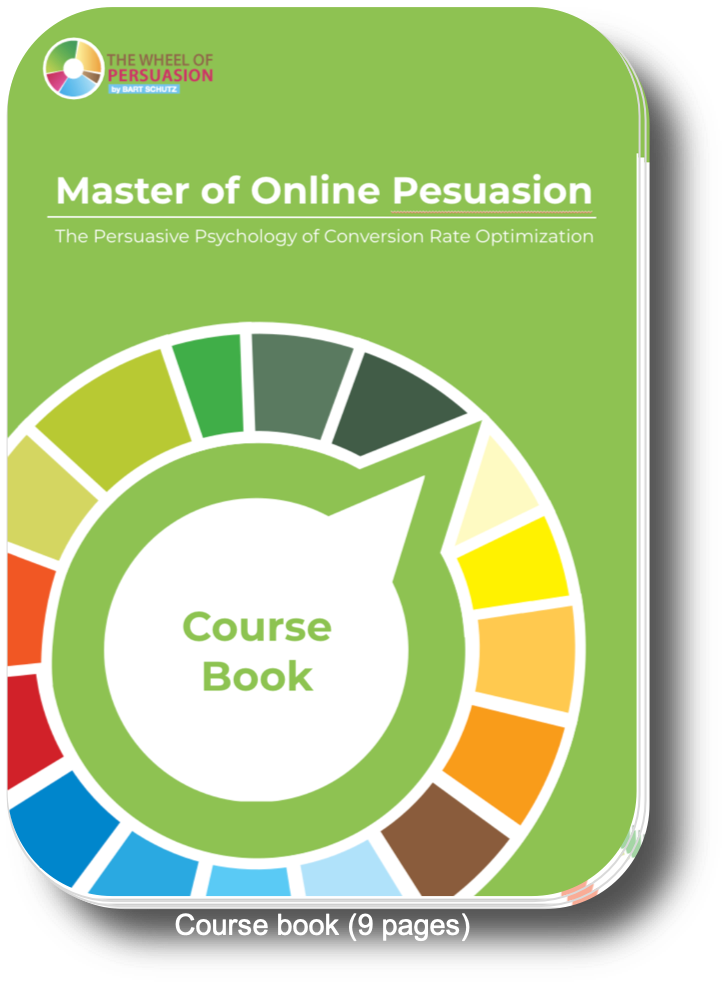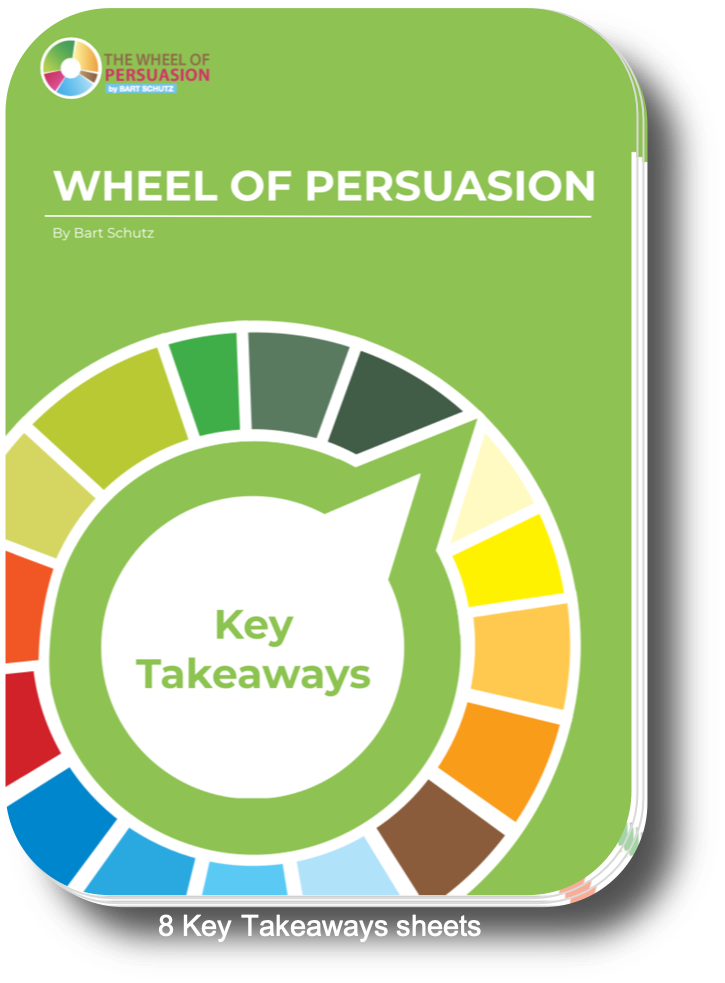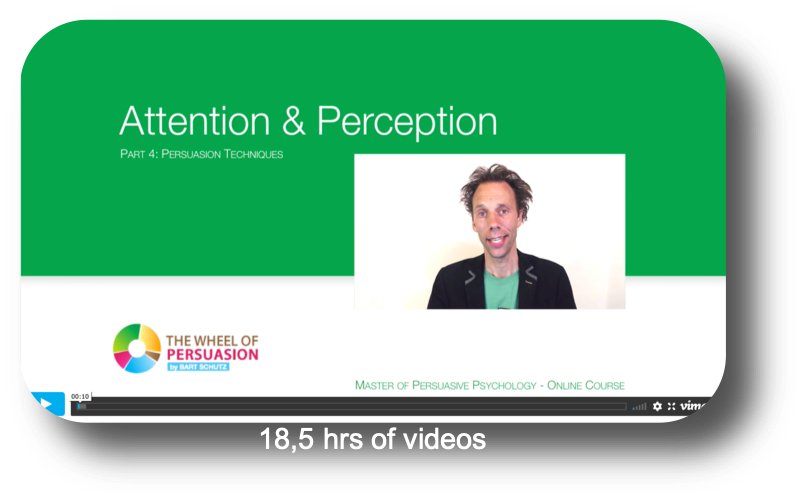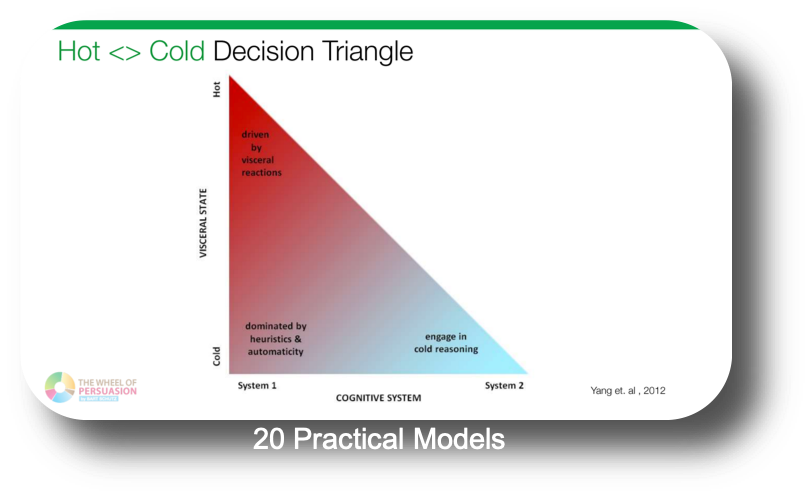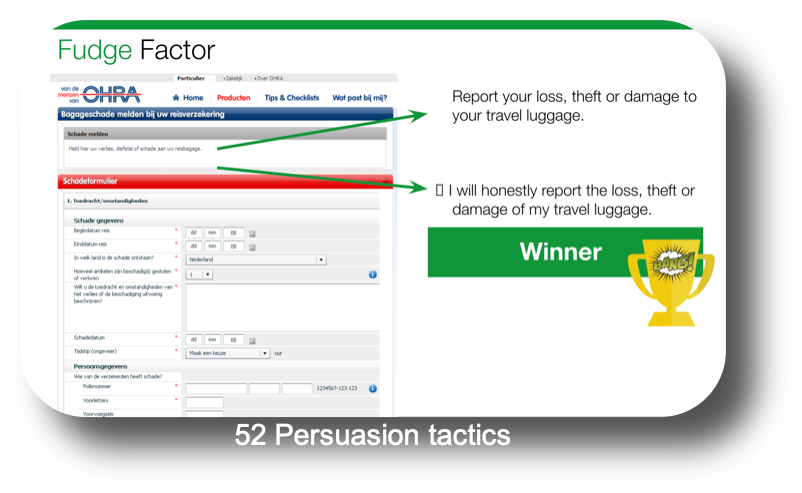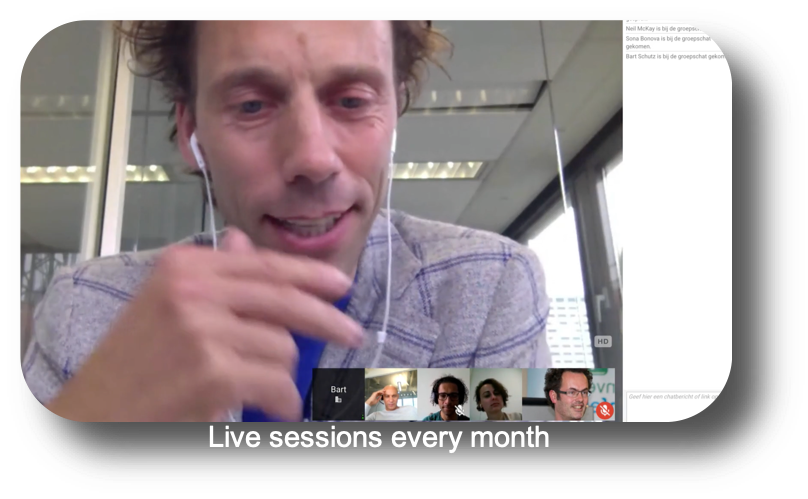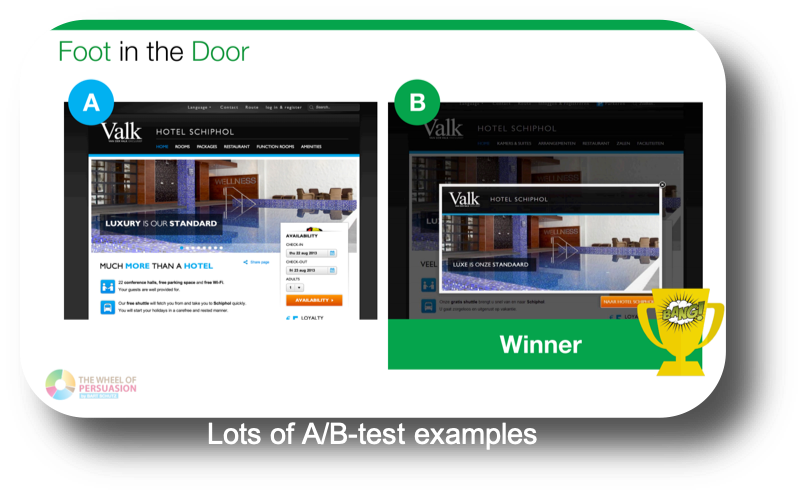MASTER OF ONLINE PERSUASION & EXPERIENCE DESIGN
Learn how to architecture your users’ digital experiences!
Customers are brains. In this full course on digital persuasion & experience design, you’ll acquire a truly deep understanding of the psychology behind your users’ behavior, decisions and experiences.
The course combines all courses available by The Wheel of Persuasion (by Bart Schutz). It provides you with all major models & theories from behavioral science and dozens of practical psychological tactics. Moreover, you’ll learn how to apply these insights to boost your digital persuasiveness and your users’ digital experience.
Persuade all customers and provide profound experiences
Become a true master in online persuasion and experience design: Sign up for our FULL COURSE! (you’ll get a full year of access to finish the course and look back)
Download the Complete Master Course Brochure
Description
You’ll learn when and how conscious brain processes and ratio control our behavior, and which psychological tactics you can apply to boost persuasiveness & user experience. But you’ll also learn a tremendous lot about how unconscious processes and emotions control our behavior too. You will learn why people do not realize the number of decisions that are taken outside their own awareness. Moreover, you’ll learn which psychological tactics you can apply to positively influence these unconscious brain processes, as well as how to make people switch between conscious and unconscious control.
Boost your sales, engagement, retention and customer experience!
What you’ll get:
- 18:30 hours of short video lectures
- Over 30 frameworks and models from behavioral science
- Over 130 Psychological Tactics
- and lots of A/B-test examples
But also:
- A full course book, and
- 8 pdf’s with Key Takeaways
Moreover, you’ll get:
- The possibility to attend live Q&A sessions, and
- your highly desired ‘master’ certificate
Course Content
This Complete Master Course dives deep into the influence on persuasiveness and experience using behavioral science insights on:
- Consciousness & ratio (2:00 hrs);
Designing for awareness - Unconsciousness & emotions (2:30 hrs);
Designing for unawareness & emotions - Attention & Perception (1:45 hrs);
Stand out and control what is perceived - Needs & Motivation (3:00 hrs);
Make people intrinsically motivated to buy - Self, Social & Situation (2:30 hrs);
Exploit the power of others and the context - Value & Price Perception (4:20 hrs);
Boost value and reduce the pain of paying - Memory & Learning (2:30 hrs);
Design habits and create loving loyal customers
Skills you'll learn
During this course, you’ll learn to:
- Grab peoples attention, control where they look and what they perceive
- Make people realize they need your products and intrinsically motivate them to buy
- Make them focus and act (buy)
- Create deep & profound user experiences that exceed expectations
- Stand out against competitors, also in people’s memory
Moreover, you’ll learn to:
- Name and apply 92 psychological tactics to boost persuasiveness & user experiences
- Realize when these tactics will be effective
- Predict & prevent counter-effective use of these tactics & principles
- Justify design choices made by you or your team, based on (scientific) evidence
- Value trustworthy evidence and data over people’s intuitions and opinions
And you can:
- Optimize your digital strategy, knowing the determinants of people’s behavior & experience
- Use your knowledge to innovate products
- Instantly optimize all user journeys
- Let behavioral intelligence guide your designs for campaigns, ads, landing pages, products, features, innovations, etc.
- Boost the effectiveness of a/b-tests, realizing more winners and higher uplifts (and counter-intuïtive, yet winning challengers)
And finally, you’ll learn:
- How unique & inspirational humans really are
- That you’ll still need to experiment & validate as much as you can
- To recognize the real behavioral experts and counter false claims about behavioral science
- Navigate on your ethical compass and embed ethics in your organization’s DNA

